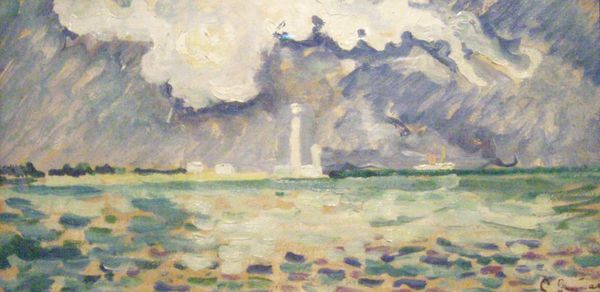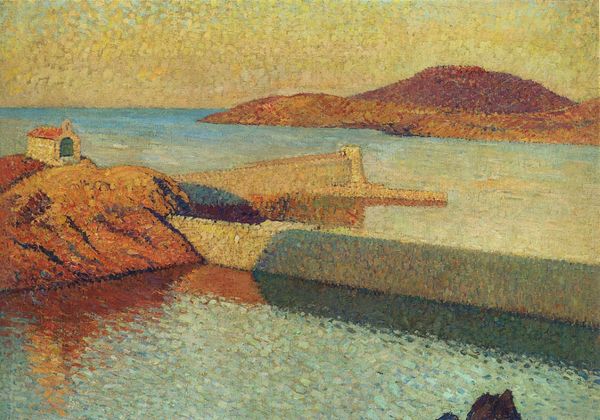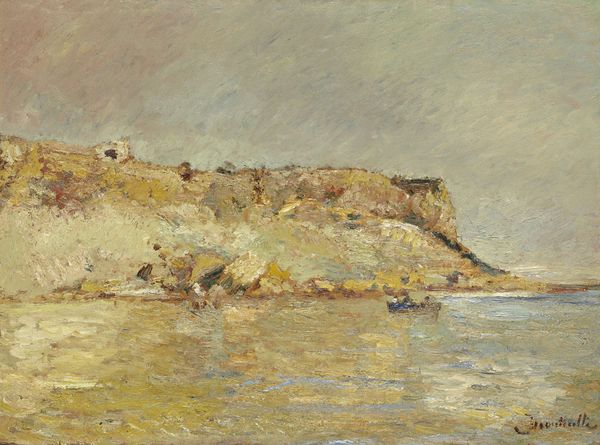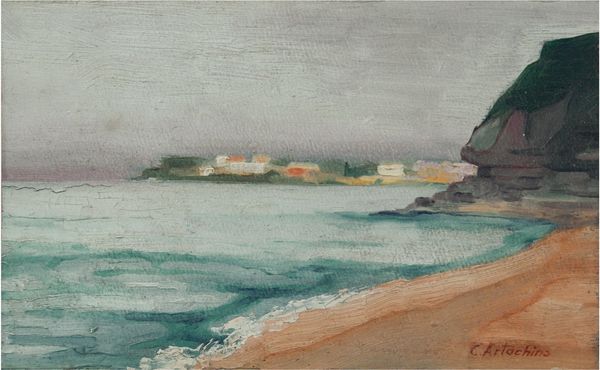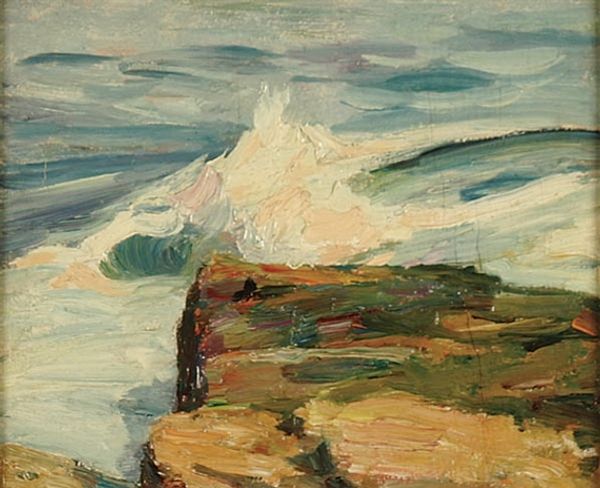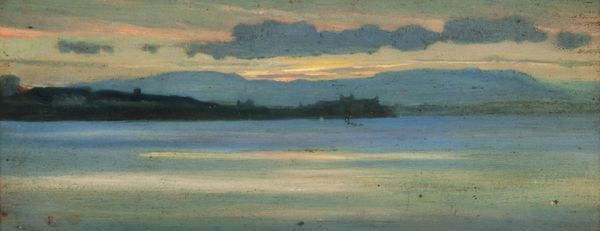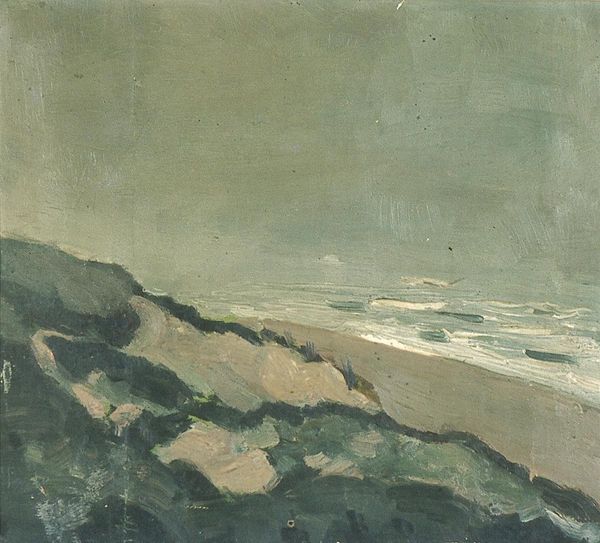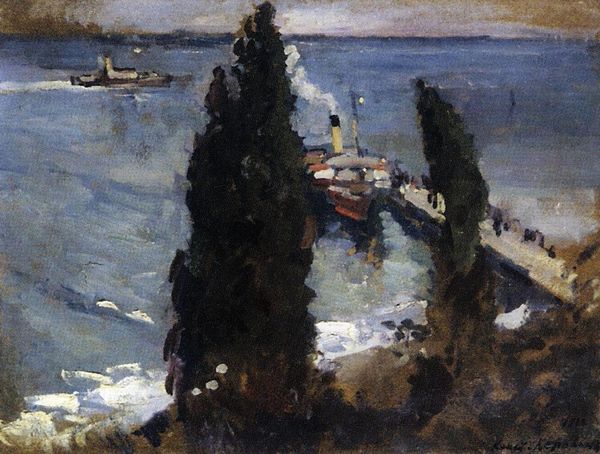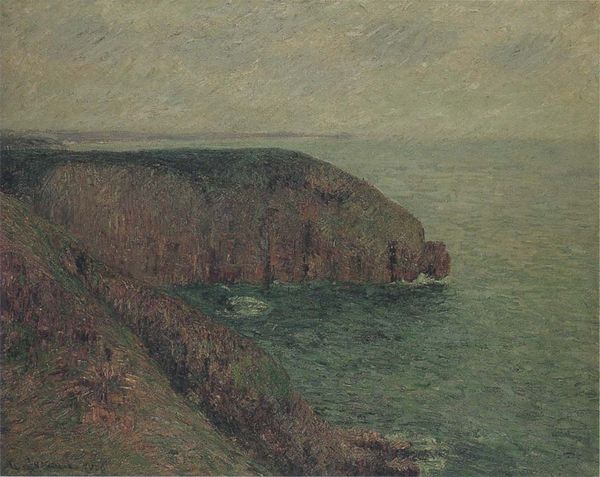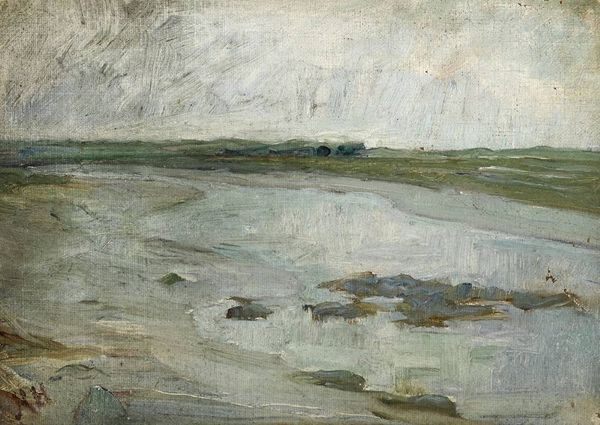
Copyright: Public domain
Curator: Albert Marquet created this evocative cityscape, "Notre-Dame in Winter," in 1902. It’s an oil painting that presents a brooding view of Paris in the colder months. What’s your immediate take? Editor: My first impression is somber and isolating. The limited palette of muted purples, grays, and whites contributes to this feeling. It looks almost oppressive. I want to know why the artist chose to represent it this way, because these feelings also reveal social sentiments. Curator: The choice is revealing, isn’t it? We need to consider the Parisian art scene at the time. Marquet, though associated with the Fauves, often chose a more subdued palette in his landscapes. It's vital to recall how impressionism sought truth through light, and in this particular example, the absence of light speaks volumes. He painted similar views of Notre Dame across his career; we can consider them visual records that map how urbanism was changing. Editor: Right, but "truth" is also a construct. While impressionism valued capturing fleeting moments, what was included, and even omitted, speaks to the artist’s position. Why focus on Notre-Dame within what feels like an alienated scene? Was he exploring faith in a quickly changing city? Or maybe critiquing how rapid development affected everyday life for everyday people? What kind of social statements were being made? Curator: Those are relevant questions. The cathedral is presented almost as a distant silhouette, overwhelmed by the cityscape and winter atmosphere. As you said, Marquet doesn't highlight its religious importance, but shows the city, in a moment, devoid of the promise that modernity made. It is, therefore, worthwhile to question what he suggests by leaving that absence so poignantly felt. Editor: Exactly! The strong horizontal lines emphasize a sense of stagnation. I can't help reading the subdued colors as a quiet political statement – a challenge to the optimistic narratives surrounding modernity and Paris, questioning whether this optimism included every community, in an equal measure. Curator: This certainly provides food for thought. It reveals, too, how landscape can be imbued with cultural anxiety or aspiration. A useful reminder, if any were needed, that it’s more than just what we see. Editor: Agreed, viewing artworks like this through both an aesthetic and a social lens allows for richer engagements with them. These paintings invite ongoing re-evaluations in our ever-changing society.
Comments
No comments
Be the first to comment and join the conversation on the ultimate creative platform.
